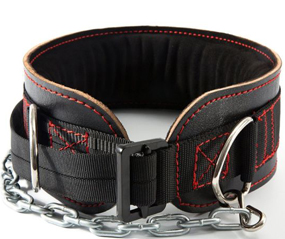Implementing effective micro-influencer campaigns for niche audiences requires a meticulous, data-driven approach that goes beyond basic influencer outreach. This article provides an expert-level, step-by-step guide to selecting the right influencers, crafting tailored collaborations, designing niche-specific content, and measuring success with precision. Drawing from advanced techniques and real-world examples, we will explore concrete tactics to ensure your campaigns resonate authentically and deliver measurable ROI.
Table of Contents
- Defining Micro-Influencer Selection Criteria for Niche Audiences
- Crafting a Tailored Outreach and Collaboration Strategy
- Designing Niche-Specific Content Guidelines and Campaign Briefs
- Implementing Tracking and Measurement Techniques
- Managing and Optimizing Campaign Performance in Real-Time
- Common Pitfalls and How to Avoid Them
- Case Study: Step-by-Step Campaign Execution
- Strategic Value and Broader Marketing Connections
1. Defining Micro-Influencer Selection Criteria for Niche Audiences
a) Establishing Precise Niche Parameters and Audience Demographics
Begin by conducting a comprehensive audience analysis specific to your niche. Utilize tools like Google Audience Insights, Facebook Audience Manager, and industry-specific forums to gather demographic data such as age, location, interests, and purchasing behavior. For example, if your niche is sustainable outdoor gear, focus on audiences interested in eco-friendly products, outdoor activities, and environmental activism.
Translate these insights into clear influencer criteria. For instance, select influencers whose followers are 70% within your target age bracket (e.g., 25-40), predominantly located in key regions, and demonstrate engagement with niche-specific content.
b) Developing a Scoring System for Influencer Authenticity, Engagement Rate, and Content Relevance
Create a quantitative scoring matrix. Assign points based on:
- Authenticity: Use tools like FollowerCheck or manual review of past sponsored content to assess genuine engagement versus fake followers. Assign 0-10 points.
- Engagement Rate: Calculate average engagement (likes + comments) divided by followers. Set thresholds, e.g., >3% earns higher points.
- Content Relevance: Analyze recent posts for alignment with your niche. Use keyword tagging and manual review to score relevance from 0-10.
Implement a weighted formula:
Total Score = (Authenticity × 0.4) + (Engagement × 0.3) + (Relevance × 0.3). Set a cutoff score (e.g., 7/10) for shortlisted influencers.
c) Utilizing Advanced Tools and Platforms to Filter Candidates
Leverage platforms like AspireIQ, Upfluence, and Hivency that offer advanced filtering based on niche interests, engagement metrics, audience demographics, and authenticity indicators.
For example, use Upfluence’s AI-powered filtering to identify influencers with at least 1,000 followers, a minimum engagement rate of 3%, and tags indicating interest in your niche. Employ API integrations to export refined influencer lists directly into your CRM or outreach tools.
2. Crafting a Tailored Outreach and Collaboration Strategy
a) Personalizing Outreach Messages Based on Influencer Content Style and Audience
Move beyond generic templated messages. Review the influencer’s recent posts—note tone, language, content format, and audience engagement styles. For example, if they favor storytelling with personal anecdotes, craft your outreach to mirror that style.
Use dynamic email templates or LinkedIn messages that reference specific posts or themes. For instance:
“Hi [Name], I loved your recent post about eco-friendly hiking gear. Your authentic storytelling aligns perfectly with our brand’s mission, and I’d love to explore a collaboration that highlights sustainable outdoor adventures.”
b) Structuring Collaboration Agreements: Deliverables, Timelines, Compensation, and Exclusivity
Draft clear contracts that specify:
- Deliverables: Number of posts/stories, formats (video, static, reels), and platform specifics.
- Timelines: Campaign start/end dates, posting schedules, and review periods.
- Compensation: Flat fee, performance-based incentives, product swaps, or affiliate commissions.
- Exclusivity: Define whether the influencer can promote competing brands during the campaign.
Use tools like DocuSign or HelloSign to automate signing. Incorporate clauses for content approval, rights transfer, and confidentiality.
c) Automating Outreach and Follow-up Processes with CRM Integrations
Set up a CRM system like HubSpot or Salesforce with custom fields for influencer status, engagement scores, and campaign stages. Use email automation tools (e.g., Mailchimp, Outreach.io) combined with CRM tags to automate:
- Initial outreach sequences
- Follow-up reminders
- Response tracking and segmentation
For example, schedule sequence emails that trigger if an influencer hasn’t responded within 48 hours, with personalized messages referencing their recent content.
3. Designing Niche-Specific Content Guidelines and Campaign Briefs
a) Creating Detailed Content Briefs Aligned with Influencer Style and Audience Preferences
Develop comprehensive briefs that include:
- Background on your brand and campaign goals
- Key messages tailored to the niche (e.g., sustainability benefits)
- Content format specifications (e.g., number of stories, video length)
- Sample captions, hashtags, and tagging instructions
- Call-to-action guidelines appropriate for niche engagement
Example: For outdoor gear, specify that posts should showcase real outdoor scenarios, include environmental tips, and use branded hashtags like #EcoAdventure.
b) Incorporating Brand Messaging While Maintaining Authenticity
Balance messaging by allowing influencers creative freedom. Provide core messages but avoid script-like instructions. For instance, suggest key points but let influencers craft their narrative style:
Expert Tip: Use a “key message matrix” to identify non-negotiable points and flexible storytelling angles, enabling genuine content that aligns with brand values.
c) Providing Creative Freedom: Examples of Flexible Briefs
Design briefs that specify the theme but allow influencers to choose their content format and tone. Example:
| Aspect | Guideline |
|---|---|
| Theme | Showcase your outdoor adventure with eco-friendly gear |
| Content Format | Storytelling, product review, or tutorial videos |
| Tone | Authentic, personal, and engaging |
4. Implementing Tracking and Measurement Techniques for Micro-Influencer Campaigns
a) Setting Up Unique Tracking Links and Promo Codes for Each Influencer
Use URL shortening and UTM parameters to create unique links, e.g., https://yourbrand.com/product?utm_source=InfluencerA. Pair with custom promo codes, such as SUSTAIN20, exclusive to each influencer, enabling precise attribution of conversions.
b) Employing Analytics Platforms to Monitor Engagement, Conversions, and Sentiment
Integrate tools like Google Analytics and Brandwatch to track traffic, conversion paths, and audience sentiment. Set up goals in GA for tracking link clicks and purchase events.
Use sentiment analysis to gauge audience reactions. For example, monitor comments and mentions post-campaign to identify shifts in brand perception, especially in niche communities sensitive to authenticity.
c) Conducting A/B Testing on Content Formats and Posting Times
Implement controlled experiments by dividing your influencer pool into groups that test different variables:
- Content types (e.g., static posts vs. reels)
- Posting times (morning vs. evening)
- Call-to-action phrasing
Analyze performance metrics such as engagement rate, click-throughs, and conversions to determine optimal formats. Use this data to refine future content strategies.
5. Managing and Optimizing Campaign Performance in Real-Time
a) Establishing KPIs Specific to Niche Engagement
Identify KPIs that matter most to your niche, such as:
- Comment quality: Are comments meaningful and aligned with niche values?
- Share rate: Is content being shared within relevant communities?
- Sentiment score: Positive, negative, or neutral reactions?
Expert Tip: Use social listening tools like Brandwatch or Mention to monitor these KPIs continuously and flag any negative sentiment early.
b) Using Social Listening Tools to Gauge Audience Reactions and Sentiment
Set up real-time alerts for brand mentions and hashtags. Analyze comment threads to assess authenticity and relevance. For example, if engagement drops or comments become generic, it may indicate content fatigue or misalignment.
c) Adjusting Content Strategy Based on Performance Data
Based on analytics, implement tactical pivots such as:
- Shifting posting times to when the niche audience is most active (e.g., early mornings for outdoor enthusiasts planning trips)
- Altering content formats that yield higher engagement (e.g., short reels over static images)
- Refining messaging to better resonate with audience sentiment
Consistently iterate by establishing a feedback loop between data insights and creative adjustments.
6. Common Pitfalls and How to Avoid Them in Micro-Influencer Campaigns
a) Overlooking Influencer Authenticity and Audience Relevance
Ensure thorough vetting. Use manual review combined with tools like FakeFollowerCheck to detect purchased followers. Cross-reference influencer followers with audience demographics for alignment, not just follower count.
b) Underestimating the Importance of Clear Communication and Contractual Clarity
Create detailed briefs and contracts. Avoid vague language—specify content scope, legal rights, and review processes. Conduct pre-campaign briefings to align expectations.





